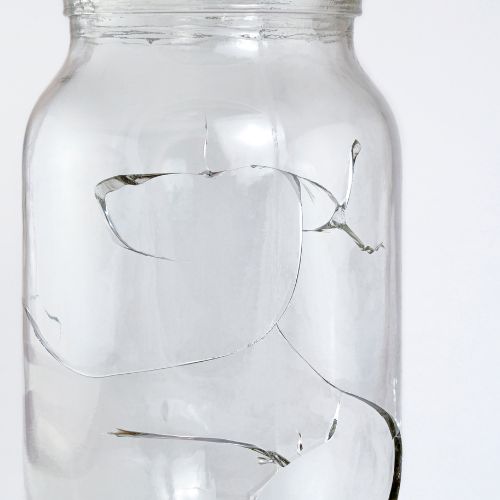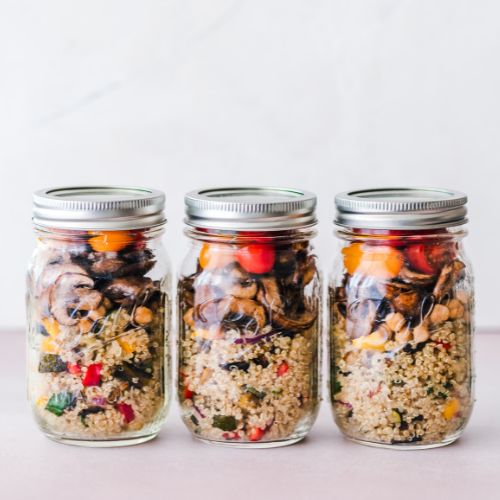Why Do Glass Bottles Break In The Freezer?
When it comes to preserving food, the freezer is a valuable tool that helps extend the shelf life of various perishable items. Freezing food not only maintains its nutritional value but also allows us to stock up on our favorite ingredients, leftovers, or homemade meals for future use. However, it’s important to consider the containers we use for freezer storage, as the wrong choice can lead to unfortunate consequences, such as glass bottle breakage.
Glass bottles have long been a popular choice for storing food and beverages due to their numerous advantages. First and foremost, glass is an inert material that does not react chemically with the contents it holds, ensuring the taste, quality, and safety of the stored food. Glass also provides excellent visibility, allowing you to easily identify the contents and monitor their condition. Additionally, glass is recyclable and environmentally friendly, making it a sustainable option for food storage.
While glass bottles offer several benefits for freezer storage, it is crucial to understand why they may break under certain conditions. This knowledge enables us to make informed choices and take necessary precautions to prevent breakage. By understanding the factors that contribute to glass bottle breakage in the freezer, we can minimize the risk and ensure the safety of our stored food.
To mitigate the risk of glass bottle breakage in the freezer, it is essential to choose bottles specifically designed for freezer storage. Two types of glass that are commonly recommended for freezer use are borosilicate glass and tempered glass. Borosilicate glass is known for its exceptional thermal shock resistance, while tempered glass is designed to withstand rapid temperature changes. Opting for these safe glass options can significantly reduce the likelihood of breakage in the freezer, ensuring the longevity of your stored food and the safety of your freezer.
Why Do Glass Bottles Break In The Freezer?

When glass is exposed to extreme temperature changes, it undergoes thermal expansion and contraction. This is a natural physical property of most materials, including glass. As temperature increases, the molecules within the glass move faster, causing the material to expand. Conversely, when the temperature decreases, the molecules slow down, leading to contraction.
Glass is particularly sensitive to rapid and extreme temperature fluctuations. When a glass bottle is placed in the freezer, the sudden drop in temperature causes the outer surface of the glass to contract faster than the inner surface. This difference in contraction rates creates internal stress within the glass structure.
Differences between glass and other materials (plastic, metal)
Compared to plastic and metal containers, glass has a higher coefficient of thermal expansion, meaning it expands and contracts more significantly with temperature changes. Plastic containers have a relatively low coefficient of thermal expansion, while metals like stainless steel and aluminum have coefficients similar to or lower than that of glass. This makes glass more susceptible to breakage in the freezer due to its greater sensitivity to thermal stress.
Uneven Distribution of Stress
As mentioned earlier, rapid temperature changes create internal stress within the glass structure. This stress is unevenly distributed, with areas experiencing higher levels of stress than others. Over time, this stress can weaken the glass and make it more prone to breakage.
The role of glass thickness and shape
The thickness and shape of the glass bottle also play a role in stress distribution. Thicker glass bottles tend to handle temperature changes better because they have more structural integrity to withstand stress. Additionally, certain bottle shapes, such as those with sharp angles or narrow necks, can concentrate stress in specific areas, increasing the likelihood of breakage.
Impact of external factors on stress distribution (tight caps, pressure)
External factors, such as tight caps or pressure inside the bottle, can exacerbate stress distribution. When a glass bottle with a tight cap is subjected to temperature changes, the pressure inside the bottle increases, adding to the stress on the glass. It is important to ensure that glass bottles are properly sealed but not overly tight to expand and contract the contents.
C. Glass Quality and Defects
- The significance of glass quality in freezer use
The quality of the glass used in bottles is crucial for freezer storage. High-quality glass is manufactured with precise standards, ensuring uniform composition and better resistance to thermal stress. Inferior quality glass may contain impurities or have structural defects that weaken the overall integrity of the bottle.
- Common glass defects that contribute to breakage
Certain glass defects can make bottles more susceptible to breakage in the freezer. Examples include microcracks, inclusions, and surface imperfections. These defects act as stress concentrators, intensifying the effects of thermal stress and increasing the risk of breakage.
How to identify and choose high-quality glass bottles for the freezer
To choose high-quality glass bottles for freezer storage, look for those made from borosilicate glass or tempered glass. Borosilicate glass is known for its exceptional thermal shock resistance, making it highly suitable for freezer use. Tempered glass is also designed to withstand rapid temperature changes and is often used in kitchenware and food storage containers. Check product labels or consult with manufacturers to ensure that the glass bottles you choose are specifically recommended for freezer storage.
Rapid Freezing and Cold Shock
In the freezer, food and liquids undergo rapid freezing, where the temperature drops quickly, causing the water molecules within the contents to form ice crystals. This rapid freezing process generates intense cold throughout the bottle.
The concept of cold shock and its effect on glass
Cold shock occurs when a glass bottle is exposed to extremely low temperatures, such as those found in the freezer. The sudden and significant cold temperature can cause the glass to contract rapidly, leading to increased stress and the potential for breakage.
Strategies to minimize cold shock and prevent glass bottle breakage
To minimize cold shock and prevent glass bottle breakage in the freezer, it is advisable to follow these strategies:
- Gradual temperature transitions: Allow the glass bottle to acclimate to lower temperatures gradually. Placing the bottle in the refrigerator for a short period before transferring it to the freezer can help minimize the temperature difference and reduce stress on the glass.
- Leaving space for expansion: When filling glass bottles for freezer storage, leave some headspace to accommodate expansion as the contents freeze. This prevents excessive pressure from building up inside the bottle.
- Avoiding sudden temperature changes: Avoid subjecting glass bottles to rapid temperature changes, such as placing a hot bottle directly in the freezer or taking a frozen bottle and exposing it to warm temperatures. Gradual temperature transitions are key to preventing thermal shock.
By implementing these strategies, you can minimize the risk of glass bottle breakage in the freezer and ensure the safety of your stored food.
Safe Glass Bottles for Freezer Use

Borosilicate glass is a type of glass that contains boron trioxide, which gives it enhanced thermal shock resistance compared to regular soda-lime glass. It is composed of silica and boron oxide, resulting in a glass with a lower thermal expansion coefficient. Borosilicate glass is commonly used in laboratory glassware and is known for its durability and ability to withstand rapid temperature changes.
Benefits of using borosilicate glass for freezer storage
Using borosilicate glass bottles for freezer storage offers several advantages:
- Excellent thermal shock resistance: Borosilicate glass can withstand a wide range of temperatures without breaking, making it highly suitable for freezer use.
- Greater durability: Due to its composition, borosilicate glass is more resistant to cracks and breakage compared to regular glass.
- Transparency and clarity: Borosilicate glass maintains its clarity even after prolonged use, allowing you to easily see the contents of the bottle.
- Chemical inertness: Borosilicate glass does not react with food or beverages, ensuring the preservation of taste and quality.
Popular brands offering borosilicate glass bottles
There are several reputable brands that offer borosilicate glass bottles designed specifically for freezer storage. Some popular options include:
- Pyrex: Pyrex is a well-known brand that produces a wide range of borosilicate glass containers, including bottles suitable for freezer use.
- Lifefactory: Lifefactory offers a variety of borosilicate glass bottles with protective silicone sleeves, making them durable and safe for freezer storage.
- Kinetic: Kinetic manufactures borosilicate glass bottles designed for freezer use, featuring airtight lids and easy-to-read measurement markings.
Tempered Glass
Tempered glass is a type of glass that undergoes a specialized manufacturing process to increase its strength and durability. It is created by heating the glass to a high temperature and then rapidly cooling it, which creates internal stresses that increase its resistance to breakage. Tempered glass is often used in applications where safety is paramount, such as automobile windows, shower doors, and kitchenware.
Advantages of tempered glass in freezer applications
- Enhanced strength: Tempered glass is significantly stronger than regular glass, making it more resistant to impact and breakage.
- Improved thermal shock resistance: The tempering process makes tempered glass more capable of withstanding rapid temperature changes, reducing the risk of breakage in the freezer.
- Safety: If tempered glass does break, it shatters into small, rounded pieces instead of sharp shards, minimizing the risk of injury.
Additional Safety Tips for Freezer Storage
In addition to using borosilicate or tempered glass bottles, consider the following safety tips for freezer storage:
- Gradual temperature transitions: Allow the glass bottles to adjust to temperature changes gradually. This can be done by placing the bottles in the refrigerator for a short period before transferring them to the freezer. Avoid placing hot glass bottles directly in the freezer or exposing frozen bottles to warm temperatures.
- Leaving space for expansion: When filling glass bottles for freezer storage, leave some headspace to accommodate the expansion of the contents as they freeze. This prevents excessive pressure buildup inside the bottle, reducing the risk of breakage.
- Avoiding sudden temperature changes: Minimize the risk of thermal shock by avoiding sudden temperature changes. Gradual transitions between different temperature environments are crucial to preventing stress and breakage in glass bottles.
By following these safety tips and selecting appropriate glass bottles designed for freezer use, you can ensure the longevity of your stored food and reduce the likelihood of glass bottle breakage in the freezer.
Final Thoughts On “Why do glass bottles break in the freezer?”
Glass bottles can break in the freezer due to several factors. The rapid expansion and contraction of glass caused by extreme temperature changes create stress within the material, leading to potential breakage. Uneven distribution of stress, influenced by factors such as glass thickness, shape, and external pressure, can further contribute to breakage. Additionally, the quality of the glass and the presence of defects can weaken the structural integrity of the bottle, increasing the risk of breakage. Rapid freezing and cold shock, caused by significant drops in temperature, can also induce stress and potentially lead to glass bottle breakage.